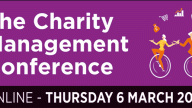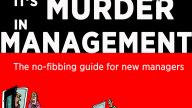Personal development, Management
Decision making without the fear
Cathy Shimmin shares a story, talks about dysfunctional assumptions and provides some sensible steps to fearless decision make.
“Once upon a time a charity acquired another organisation, thinking it was the right decision.
It went disastrously wrong and cost a huge amount of money in legal fees and compensation.
(I didn’t say it was a happily-ever-after fairytale!)
Sometime afterwards, the opportunity arose to take over a much smaller charity. The risks were absolutely minimal, and the long-term benefits could have been substantial. However, the trustees were so burned by the failure of the previous acquisition that they rejected the proposal out of hand. Their decision was not based on calm logic but on fear.
The charity they rejected then merged with another organisation – and that proved to be hugely successful. An opportunity lost because of fear based on a previous experience.”
Excerpt from DSC’s Speed Read Decision Making by Debra Allcock Tyler, check it out here.
We often assume decision-making must be rational, consistent, and best led by those in higher positions. However, this is what we call a dysfunctional assumption; a rule that guides us but limits creativity and logic. For example, in the case study above, the decision to take over a smaller charity seemed rational when weighing pros and cons but was actually driven by emotion – fear – shaped by past experiences.
Fear can be a big factor in hampering effective decisions. Which is understandable and of course, human. What other dysfunctional assumptions and hampering factors can go into decisions?
Things that can get in the way of good decision making
- Precision: This is the idea that we must make the perfect decision. In reality, this is rarely possible. Time, resources and circumstance often mean we must make the best decision with what we have available to us.
- Position: e.g. “I am too busy to apply creativity to the process”. We take a stance on something that actually works against getting to the best outcome.
- Pattern: We should be consistent in our approach (even when the context and need are different). We do things the same way, the way we always do – apparently expecting different results, which Einstein coined as ‘the definition of madness’
- People: If we are gathering information, it’s not uncommon for us to overlook or outright ignore relevant information because we ‘don’t like’ the person it is coming from. Additionally, we assume, or rather, confuse expertise with position sometimes, for example, a CEO takes decision about development of frontline services instead of having front line staff lead on it.
So, we’re about halfway through here – what do we do about all this and what of those ‘sensible steps’?
Forget about making perfect decisions. Apply a step-by-step approach with some starter questions.
- Be sure – does this ‘issue’ need a decision at all? Sometimes allowing things to develop will naturally bring you to the best conclusion. Does it need a decision now? Should you wait for further information first?
- What sort of decision is needed here? Authoritarian – just you/someone else? Consensus – persuasion might get everyone on board, but it might also mean others ‘go along with’ just for peace’s sake. Majority – might feel democratic but those who didn’t ‘win’ might be inclined to look for flaws when it comes to implementation. Look for alignment if you can’t get an agreement. That allows people to ‘save face’ on backing down by saying they will go along with the decision, despite their reservations.
- Weigh up risk and impact before you get to the pro’s and con’s. How likely is it that something ‘bad’ could go wrong and, how big is the impact if it does? High likelihood with big impact should of course call for caution. Low likelihood with low impact allows for trial and experimentation – let’s suck it and see.
- Decide timescales and parameters and share your thinking with stakeholders right from the start.
- Gather information. The important point here is about consultation. Short cut on this at your peril. Be assured – you will get far more buy in when you consult on “What should be included in the strategy?” than if you consult on “What do think of the strategy I have come up with?”
- Gather evidence that contradicts what you already know. This helps challenge current perceptions, misperceptions, pattern thinking and position taking.
- Bring in a bit of creativity. The typical approach is to think ‘How would we make this better?’ Sometimes ask ‘How would we make this worse?’ – you might spot things that you are already doing that are colluding with the problem. Use brainstorming approaches and the like within consultation and discussion.
- When it comes to finalising the decision ensure it aligns with your charitable objects, strategic objectives and – absolutely – with your values.
- Present your decision in the first instance as tentative and open to feedback. Ask for feedback and be clear on what is and isn’t moveable on your decision.
- Implement the final decision and set some review points and measures. Monitor and support people with the new plan and amend it at review points.
Finally – be tolerant with yourself and others. There is no point in beating yourself up if a decision turns out not as you’d hoped. Backtrack, review and improve on your process next time.
If you want to find out more about the psychological factors affecting decision-making, applying a process and bringing in more creativity, join us at our Charity Management Conference on 6th March and join my session on Making Better Decisions
Join us at The Charity Management Conference for a session on decision-making
We understand that managing a charity can be tough and comes with a lot of pressure. It can be challenging to balance managing upwards and downwards.
That’s why we would like to invite you to The Charity Management Conference on Thursday 6 March. Throughout the day, we will explore new ways to navigate the multi-dimensional role of being a charity manager.




